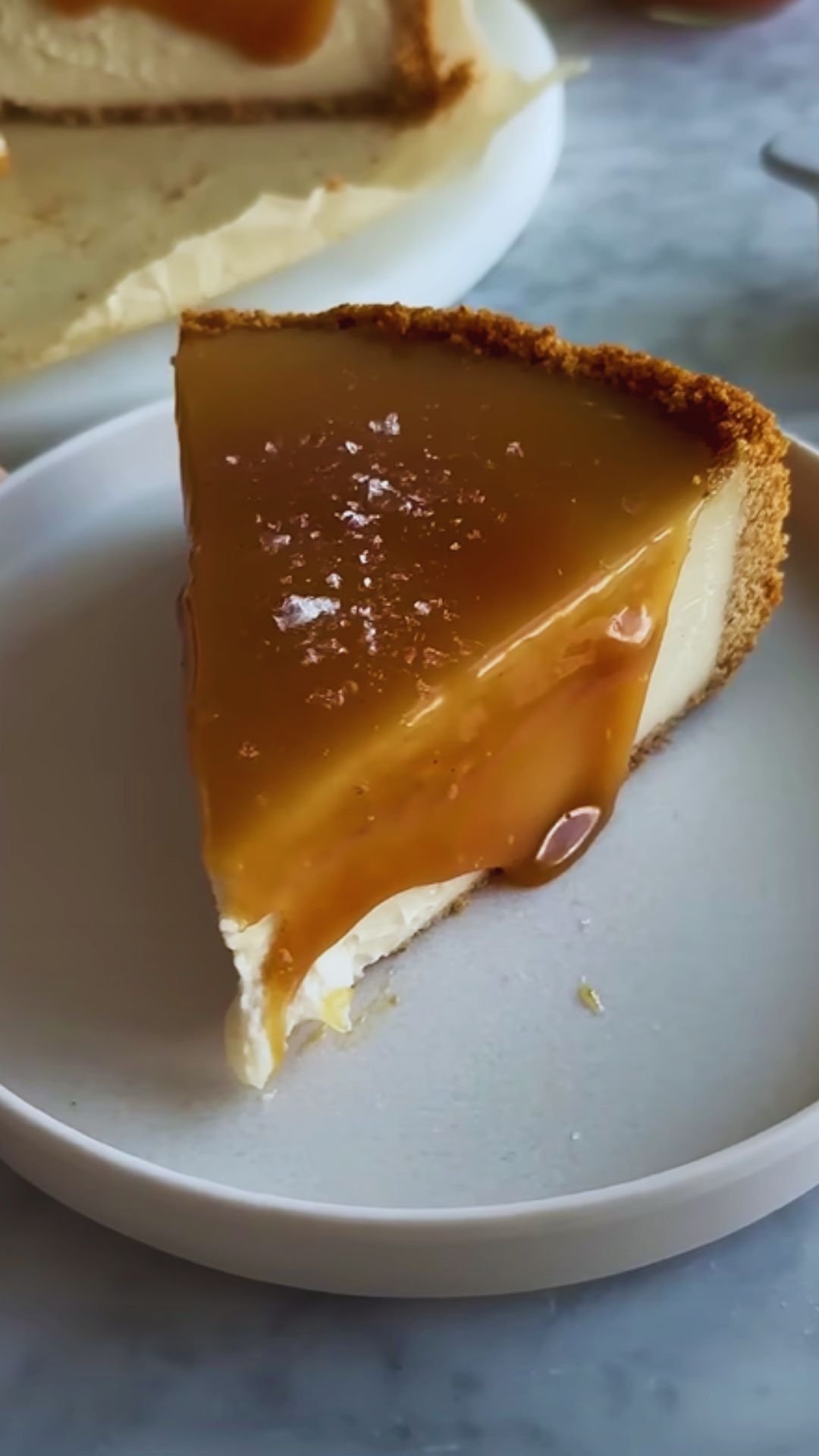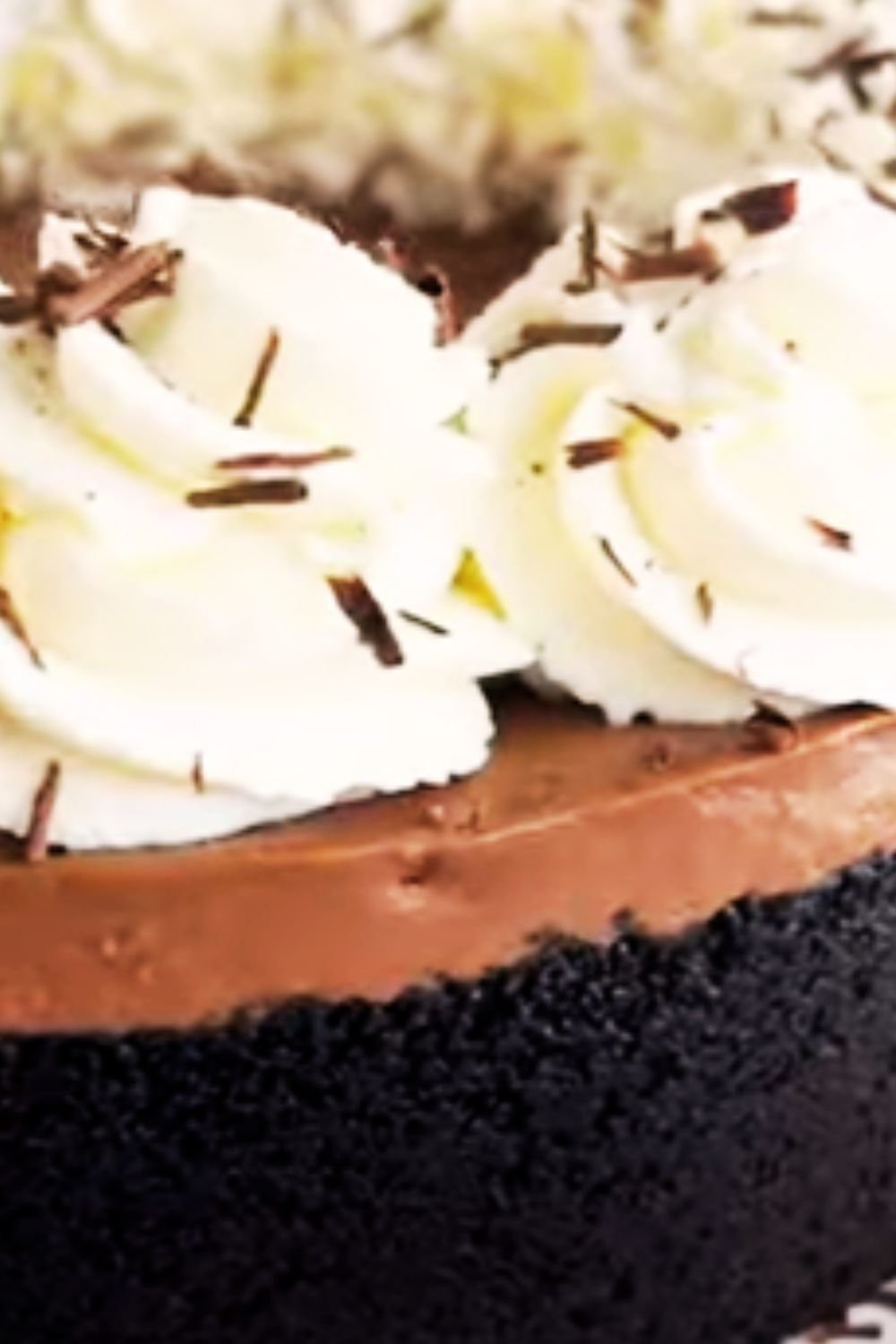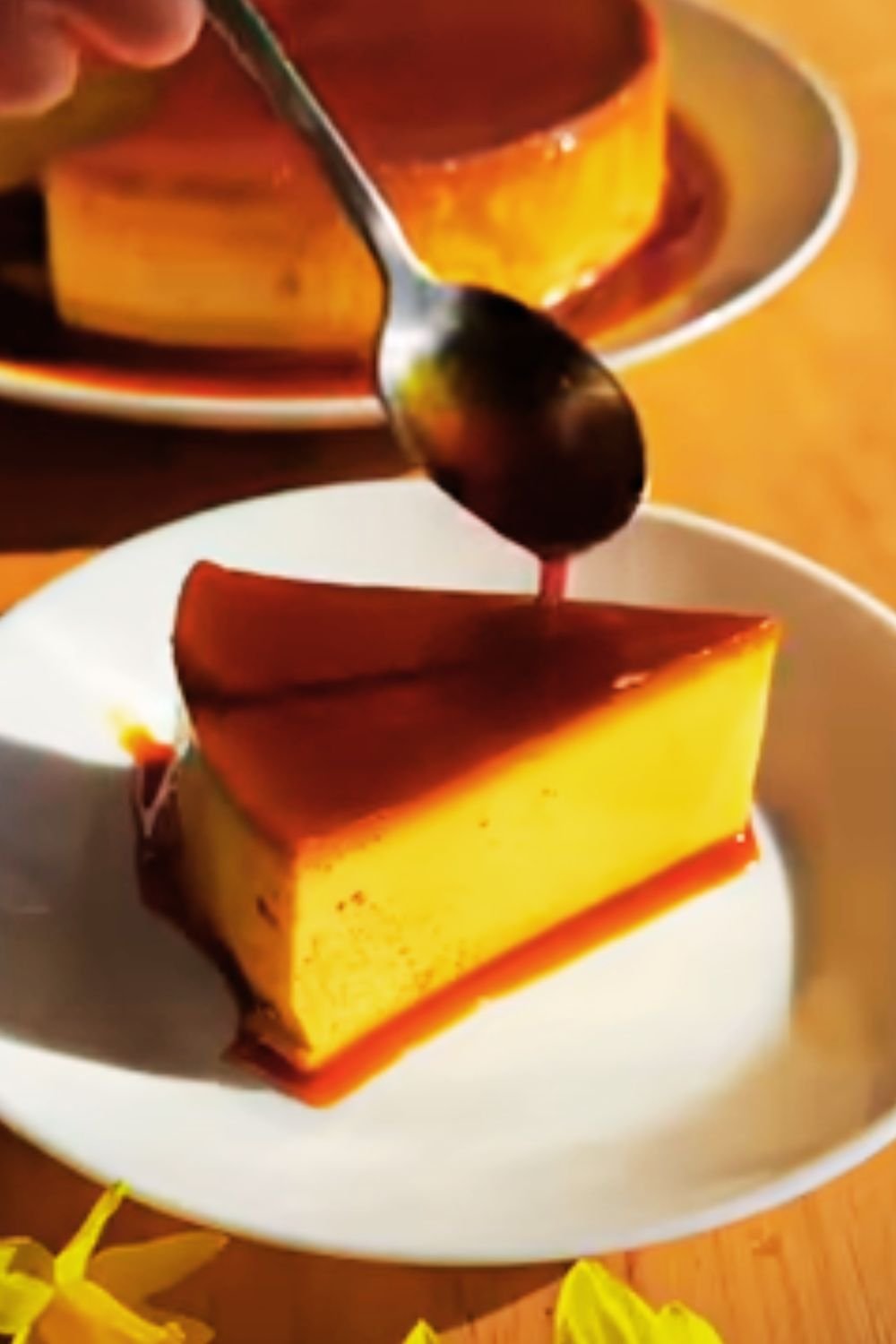Have you ever tasted something so divine that your taste buds did a happy dance? That’s exactly what happens when you sink your fork into a slice of this easy salted caramel cheesecake. I’ve been perfecting this recipe for years, and I’m thrilled to finally share my secrets with you. The combination of smooth, creamy cheesecake with rich, buttery salted caramel creates a dessert experience that’s nothing short of magical.
What makes this recipe truly special is how approachable it is, even for beginners. No water baths. No complicated techniques. Just straightforward steps that lead to spectacular results. Trust me when I say that this will become your go-to dessert for impressing guests or treating yourself after a long week.
The Magic Behind This Recipe
Before we dive into the ingredients and steps, let me share why this recipe works so beautifully. The secret lies in the balance of flavors and textures. The slightly salty edge cuts through the sweetness, creating a sophisticated flavor profile that elevates this cheesecake beyond the ordinary. The buttery graham cracker crust provides the perfect foundation, while the velvety cheesecake filling practically melts in your mouth.
I’ve designed this recipe to be foolproof. The careful temperature controls and cooling process prevent the dreaded crack that plagues many cheesecakes. And even if you do get a small crack? The luscious caramel topping will cover it beautifully. It’s a win-win!
Ingredients You’ll Need
For the Graham Cracker Crust:
- 2 cups graham cracker crumbs (about 15-16 full sheets)
- 1/4 cup granulated sugar
- 1/2 cup (1 stick) unsalted butter, melted
- 1/4 teaspoon salt
For the Cheesecake Filling:
- 4 packages (32 oz total) cream cheese, softened to room temperature
- 1 1/4 cups granulated sugar
- 1/2 cup sour cream, at room temperature
- 2 teaspoons pure vanilla extract
- 4 large eggs, at room temperature
- 1/4 cup heavy cream, at room temperature
For the Salted Caramel Sauce:
- 1 cup granulated sugar
- 6 tablespoons unsalted butter, cut into pieces, at room temperature
- 1/2 cup heavy cream, at room temperature
- 1 1/2 teaspoons flaky sea salt (like Maldon) + extra for garnish
Essential Equipment
Before you begin, make sure you have:
- 9-inch springform pan
- Electric mixer (stand or handheld)
- Measuring cups and spoons
- Medium-sized heavy-bottomed saucepan (for caramel)
- Aluminum foil
- Wire cooling rack
- Food processor (optional, for crushing graham crackers)
Detailed Instructions
Preparing the Perfect Crust
- Preheat your oven to 350°F (175°C).
- Wrap the outside of a 9-inch springform pan with aluminum foil, covering the bottom and extending up the sides. This prevents any butter from leaking out.
- In a medium bowl, combine graham cracker crumbs, sugar, and salt.
- Pour in the melted butter and mix until every crumb is moistened.
- Press the mixture firmly into the bottom and about 1-1.5 inches up the sides of your springform pan. I find using the bottom of a measuring cup helps create an even, well-packed crust.
- Bake the crust for 10 minutes until it’s lightly golden and smells wonderfully fragrant.
- Remove from the oven and let it cool completely on a wire rack.
- Reduce the oven temperature to 325°F (165°C) for the cheesecake filling.
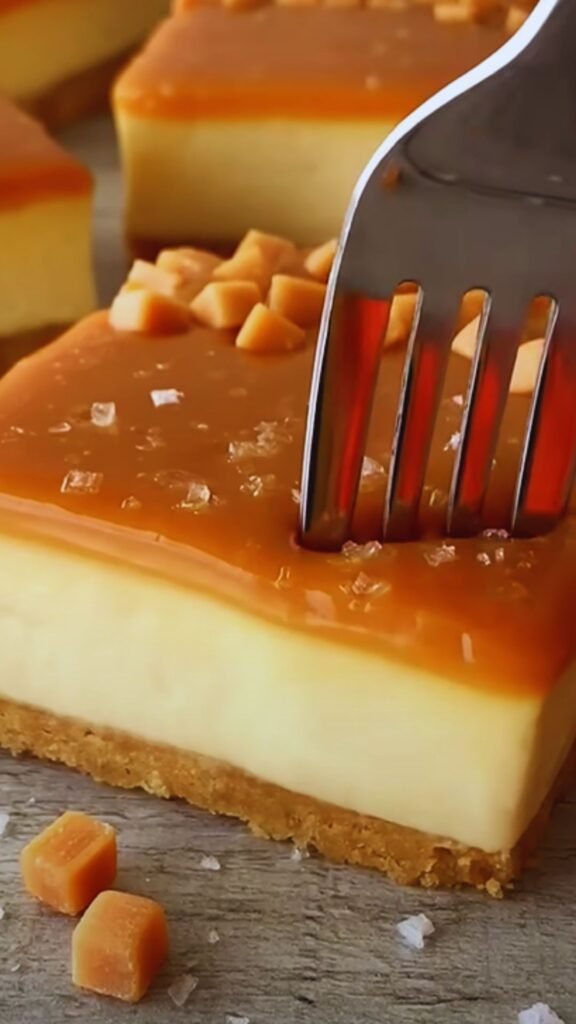
Creating the Dreamy Cheesecake Filling
- Make sure all your filling ingredients are at room temperature – this is crucial for a smooth texture!
- In a large mixing bowl, beat the cream cheese on medium-low speed until completely smooth and free of lumps, about 2-3 minutes. Scrape down the sides of the bowl often.
- Add the sugar and beat for another 1-2 minutes until well incorporated and smooth.
- Mix in the sour cream and vanilla extract until fully combined.
- On low speed, add the eggs one at a time, mixing just until each is incorporated. Overbeating after adding eggs can cause the cheesecake to crack, so mix gently.
- Finally, stir in the heavy cream until just combined.
- Pour the smooth filling onto the cooled crust.
Baking Secrets for No-Crack Success
- Place the foil-wrapped springform pan on a large baking sheet.
- Bake at 325°F (165°C) for 55-65 minutes. The edges will be set, but the center will still have a slight jiggle – like Jell-O.
- Turn off the oven without opening the door and let the cheesecake sit in the cooling oven for 1 hour.
- After an hour, crack the oven door slightly and let it cool for another 30 minutes.
- Remove the cheesecake from the oven and run a thin knife around the edge to loosen it from the pan. This prevents cracking as it cools and contracts.
- Let the cheesecake cool completely at room temperature, about 2-3 hours.
- Once cooled, cover and refrigerate for at least 6 hours, preferably overnight. Patience is key to the perfect texture!
Making the Irresistible Salted Caramel
- In a medium heavy-bottomed saucepan, heat the sugar over medium heat.
- As the sugar begins to melt, stir gently with a heat-resistant spatula or wooden spoon. The sugar will form clumps and eventually melt into a thick brown liquid.
- Once the sugar is completely melted (no crystals remaining), immediately add the butter. Be careful – the caramel will bubble rapidly!
- Stir until the butter is completely melted, about 2-3 minutes.
- Very slowly, drizzle in the heavy cream while stirring constantly. Again, the mixture will bubble vigorously.
- Allow the mixture to boil for 1 minute without stirring.
- Remove from heat and stir in the sea salt.
- Allow to cool for about 15-20 minutes before using. The caramel will thicken as it cools.
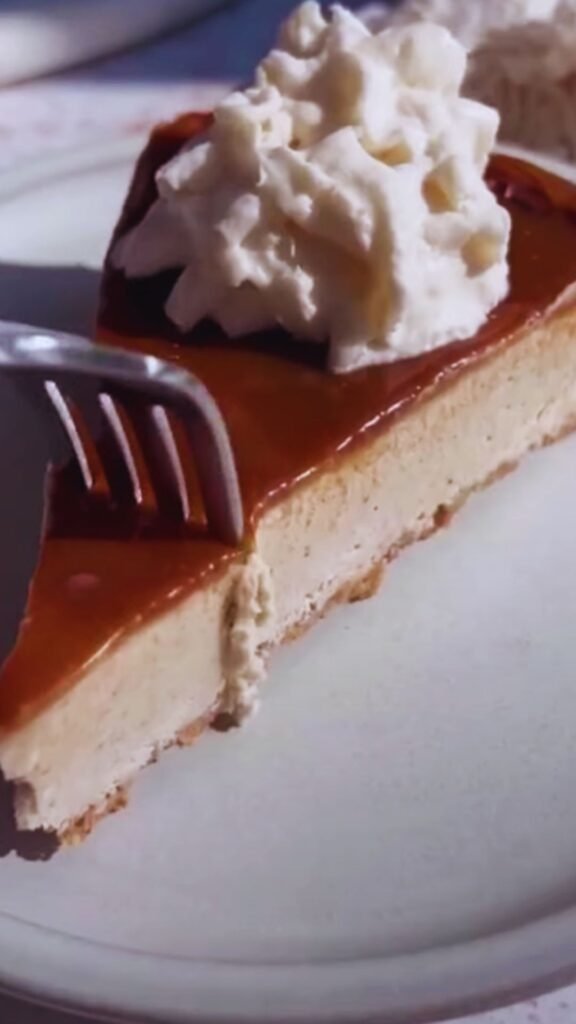
Assembly and Presentation
- When you’re ready to serve, remove the sides of the springform pan.
- Pour about two-thirds of the slightly cooled caramel sauce over the top of the cheesecake, spreading it to the edges and allowing some to artfully drip down the sides.
- Sprinkle additional sea salt flakes over the caramel for that perfect sweet-salty balance.
- Refrigerate the cheesecake for about 10 minutes to let the caramel set slightly.
- Reserve the remaining caramel sauce for drizzling over individual slices.
Pro Tips for Cheesecake Perfection
I’ve made this recipe dozens of times, and through trial and error, I’ve discovered these critical tips that make all the difference:
- Room temperature ingredients: This isn’t optional! Cold cream cheese will never fully incorporate, leaving you with lumps. I set my ingredients out at least 2 hours before starting.
- Don’t rush the cooling process: The gradual temperature change prevents shocking the cheesecake, which can cause cracks and affect texture.
- Watch the caramel like a hawk: Sugar can go from perfectly caramelized to burnt in seconds. Stay focused and keep your heavy cream and butter ready to go.
- Cut with a hot knife: For picture-perfect slices, dip your knife in hot water and wipe it clean between cuts.
- Make the caramel sauce ahead: It keeps beautifully in the refrigerator for up to 2 weeks. Just warm it slightly before using.
Troubleshooting Common Issues
| Problem | Possible Cause | Solution |
|---|---|---|
| Cracked cheesecake | Overbeating, sudden temperature changes, or overbaking | Beat minimally after adding eggs, cool gradually, look for jiggly center rather than fully set |
| Lumpy filling | Cold ingredients or insufficient mixing | Ensure room temperature ingredients, beat cream cheese thoroughly before adding other ingredients |
| Grainy caramel | Sugar crystallization | Avoid stirring until sugar begins to melt, use clean utensils |
| Soggy crust | Insufficient pre-baking or butter leakage | Pre-bake crust and ensure proper foil wrapping |
| Sunken center | Opening oven door during baking | Keep oven closed until cooling stage begins |
| Too-soft filling | Underbaking or insufficient cooling time | Extend baking time slightly, ensure complete cooling before refrigeration |
Variations to Try
While the classic recipe is absolutely perfect, here are some variations I’ve experimented with:
Chocolate Lover’s Version
- Add 8 oz melted and cooled semi-sweet chocolate to the cheesecake batter
- Use chocolate graham crackers for the crust
- Drizzle with both salted caramel and chocolate ganache
Bourbon Caramel Twist
- Add 2 tablespoons of good quality bourbon to the caramel sauce
- Mix 1 teaspoon of cinnamon into the graham cracker crust
- Garnish with candied pecans
Coffee Infusion
- Add 1 tablespoon instant espresso powder to the cheesecake filling
- Use brown sugar instead of white in the crust
- Serve with a dollop of coffee-infused whipped cream
Fruit-Forward Option
- Layer thinly sliced apples tossed with cinnamon between the crust and filling
- Add a layer of banana slices on top before the caramel
- Serve with fresh berries for a bright contrast
Make-Ahead and Storage Instructions
This cheesecake is perfect for preparing in advance of special occasions:
Make-Ahead Timeline:
- 3 days ahead: Prepare the graham cracker crust, bake, and store tightly covered at room temperature.
- 2 days ahead: Bake the complete cheesecake and refrigerate.
- 1 day ahead: Prepare the caramel sauce and store separately in the refrigerator.
- Day of serving: Top the cheesecake with caramel and sea salt about 1-2 hours before serving.
Storage Tips:
- Refrigerator: Cover loosely with plastic wrap or store in an airtight container for up to 5 days.
- Freezer: Wrap individual slices or the whole cheesecake (without caramel topping) tightly in plastic wrap, then aluminum foil. Freeze for up to 2 months. Thaw overnight in the refrigerator.
- Caramel sauce: Store in a glass jar with tight-fitting lid for up to 2 weeks in the refrigerator. Warm gently before using.
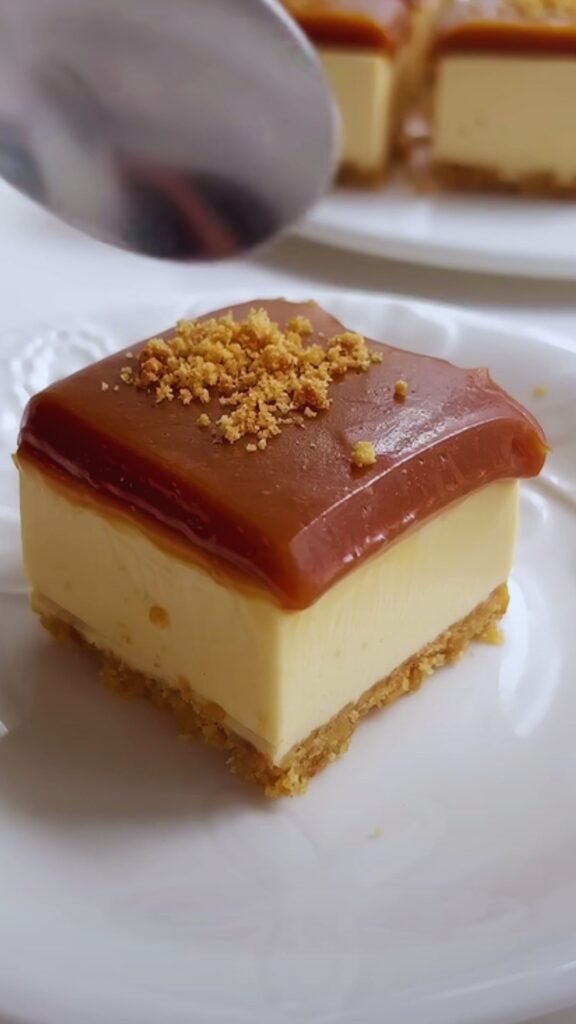
Nutritional Information
| Nutrient | Amount per Serving (1/12 of cake) |
|---|---|
| Calories | 650 |
| Total Fat | 45g |
| Saturated Fat | 27g |
| Cholesterol | 185mg |
| Sodium | 410mg |
| Total Carbohydrates | 58g |
| Dietary Fiber | 1g |
| Sugars | 50g |
| Protein | 8g |
| Calcium | 10% DV |
| Iron | 6% DV |
Note: Nutritional information is approximate and may vary based on exact ingredients used.
Serving Suggestions
Take your salted caramel cheesecake experience to the next level with these perfect pairings:
- A dollop of lightly sweetened whipped cream adds a cloud-like element that balances the richness.
- Fresh berries, particularly raspberries or blackberries, provide a tangy contrast.
- A scoop of vanilla bean ice cream creates a hot-and-cold sensation when served with warm caramel.
- A small espresso or cappuccino cuts through the sweetness beautifully.
- For special occasions, serve with a glass of sparkling cider for a festive touch.
- A dusting of cocoa powder or gold edible glitter adds visual drama for celebrations.
The Science Behind Perfect Cheesecake
Understanding the “why” behind baking instructions helps ensure success:
The low and slow baking approach allows the proteins in the eggs and cream cheese to set gradually, creating that signature creamy texture. The reason we cool the cheesecake so carefully is that the residual heat continues cooking the center while preventing the dramatic temperature change that causes cracks.
The leavening action of the eggs, combined with air incorporated during mixing, gives the cheesecake its slight rise. However, overmixing incorporates too much air, which expands during baking and then collapses, causing cracks.
Room temperature ingredients blend more easily because the fats in cream cheese, butter, and eggs emulsify better at warmer temperatures, creating a smoother texture and more homogenous mixture.
Q&A Section
Q: Can I make this cheesecake without a springform pan? A: Yes, though it’s trickier. Line a deep cake pan with parchment paper with overhanging edges to help lift the cheesecake out after cooling. The presentation won’t be quite as clean, but the taste will be identical.
Q: My caramel sauce hardened. What did I do wrong? A: If your caramel hardened immediately after adding the cream, the cream was likely too cold. Make sure all ingredients are at room temperature. To fix hardened caramel, gently reheat it over low heat, stirring constantly.
Q: Can I substitute Greek yogurt for sour cream? A: Absolutely! Full-fat Greek yogurt makes an excellent 1:1 substitute for sour cream in this recipe, offering a slightly tangier flavor profile that works beautifully with the caramel.
Q: Why did my cheesecake sink in the middle? A: Cheesecakes typically sink a little as they cool, which is normal. Excessive sinking usually indicates underbaking. Next time, look for the edges to be set but the center to still have a slight jiggle before beginning the cooling process.
Q: Is it possible to make a dairy-free version? A: Yes, though it requires multiple substitutions. Use dairy-free cream cheese, coconut cream instead of heavy cream, and plant-based butter. The texture will be slightly different, but still delicious. The caramel is trickier – look for specialty recipes designed to be dairy-free.
Q: How far in advance can I make this for a party? A: This cheesecake is actually best made 1-2 days ahead! The flavors have time to meld, and the texture improves. Just add the caramel topping within a few hours of serving.
Q: My caramel sauce is too thin. How can I thicken it? A: If your caramel sauce is too thin, you likely didn’t let it boil long enough. You can remedy this by returning it to the heat and letting it simmer for another 1-2 minutes, then cooling again. It will thicken considerably as it cools.
Q: Can I use store-bought caramel sauce to save time? A: You can, but the flavor won’t be as rich or complex. If using store-bought, choose a high-quality sauce and consider enhancing it by warming it with a pinch of sea salt and perhaps a splash of vanilla.
Final Thoughts
Creating this salted caramel cheesecake is more than just following a recipe – it’s creating an experience. There’s something so satisfying about watching people close their eyes in bliss with that first bite. The combination of the buttery crust, creamy filling, and that perfect sweet-salty caramel creates a dessert that’s worth every minute spent making it.
I hope you enjoy making this cheesecake as much as I enjoy sharing the recipe with you. Remember, baking is part science and part art – embrace the process and don’t be afraid to make it your own. The joy is in both the creating and the sharing!

